Arrow Selection: How to Choose the Right Arrow
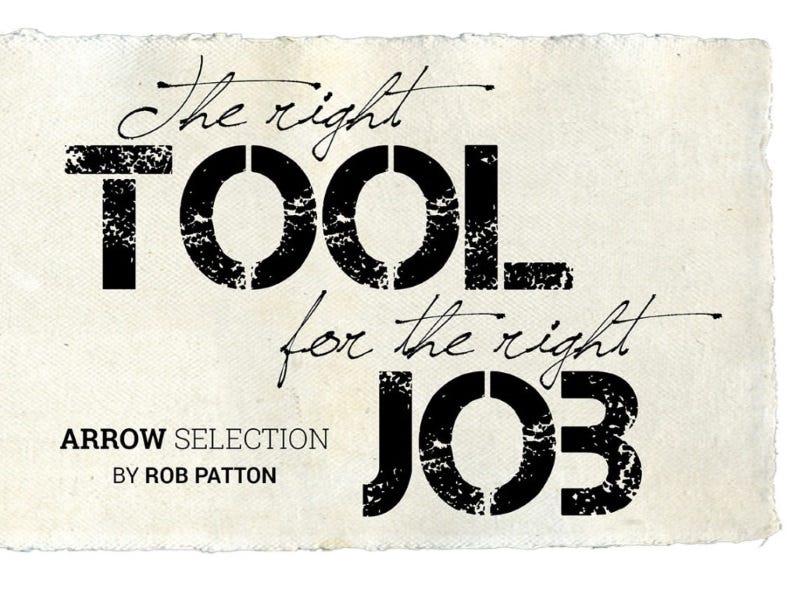

Whether you are hunting game animals, or at the shoot-off in the World Archery Festival in Las Vegas, you need to be sure you've got the right tools for the job. Today, we are talking about arrows. The quality and selection of arrows on the market today is far better than it has ever been. There is an arrow available for every application and, thankfully, an arrow for every pocket book. So, what should your next arrow be? The biggest question that I have for you is "what are you going to be using it for?"
Before we dive into the practical uses of arrows, let's find out exactly what separates all the arrows that your local (North 40) archery shop has on the wall - other than their label. First we need to cover some terminology. The most important specifications that should determine what arrow is going to be best for you are Arrow Spine, Straightness Tolerance, Grains per Inch (mass weight), and Front of Center.
All arrows need a couple of accessories, we've got ours online here.
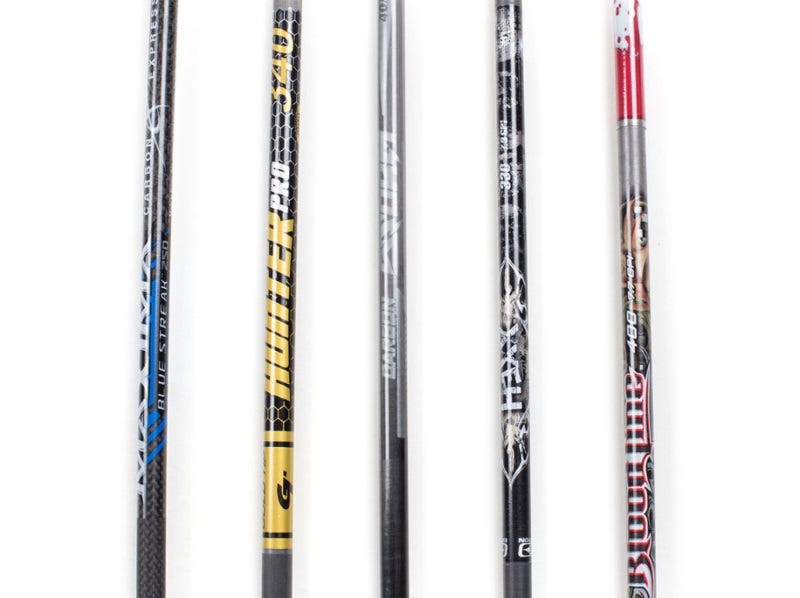
Arrow Spine Fittings
Arrow Spine is the most widely used measurement for fitting an arrow to a bow, based on the draw length and draw weight. What most people don't realize is that an arrow has two different spine measurements; Static Spine and Dynamic Spine. Static Spine is the stiffness of an arrow and is the number that every arrow company references on the arrow itself. You might have seen it listed as the number after the model of arrow - 200, 250, 300, 340, 350, 400, 5575, and 7595 are some of the more common designations.
What does that all mean though? Static spine is measured by suspending an 880 gram (1.94 pound) weight from the center of an arrow. The arrow must be 29 inches long and supported by two points of contact that are 28 inches apart. The deflection of the arrow, in inches, is the Static Spine. Therefore, if the arrow's deflection is .340 inches we call it a 340 Spine arrow. Where things really get messy is that not every arrow manufacturer uses the same designation for the same spine weight of arrow. Here is a quick list of the arrows we carry here in our shop, and their spine listings.
Arrow Brand .340 .400 .500
Gold Tip 7595 5575 3555
Carbon Express 350 250 150
PSE 300 200 100
Easton / Beman 340 400 500
What's the Dynamic Spine?
Dynamic Spine is how stiff an arrow acts as it is being shot off of a bow. Determining the Dynamic Spine of an arrow is more art than science. There are several factors that will change how stiff an arrow acts. To make an arrow act stiffer you can: shorten the length of the arrow, decrease the poundage of the bow, or decrease the field point / broad head weight.
If your arrow is too stiff, you can make your arrow 'weaker' by shooting longer arrows (of the same make / model / spine), increasing the poundage of the bow, or increasing the tip weight. Arrows that are under-spined will appear to be tail-right in the target, and over-spined arrows will be tail-left. (For more explanation of tail-left or tail-right, please read my blog on DIY TUNING.) Making sure that your arrows have the correct spine for your bow setup means that you'll have more consistent arrow flight, which in turn means that your accuracy should improve as well.
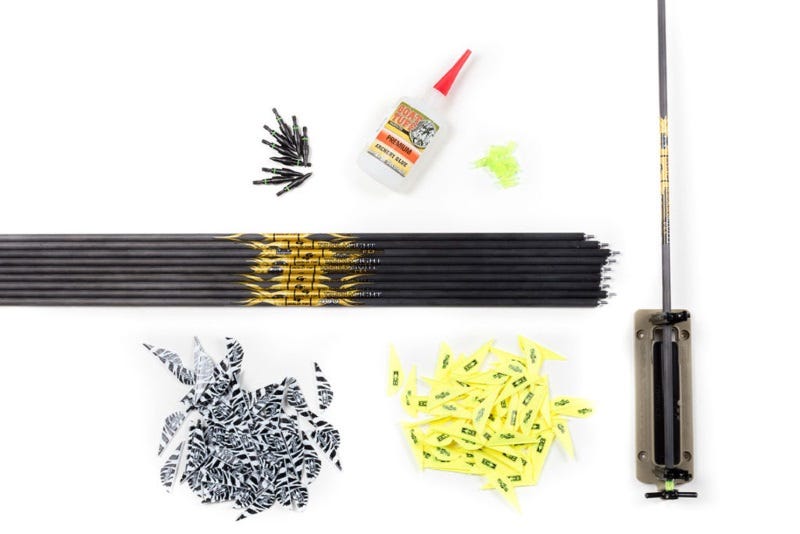
The Importance of Straightness Tolerance
In my setups, the Straightness Tolerance of the arrow is just as important as choosing the correct spine. The name says it all, this is a measurement of the deviation that a given dozen arrows is allowed to have. All manufacturers will tell you what this tolerance measurement for each style of arrow is, but it is usually only on their website or catalog.
Here are nock options you can order from us.
The three most common are +/- .006, .003, and .001. Just like arrow spine, this is a measurement taken in inches. While it may seem like an incredibly small difference, there is enough of a difference to cause inconsistent arrow flight, especially when shooting with broad heads. If you have an arrow spinner, it is easy to visually see the 'wobble' that can cause erratic flight path. If you don't have an arrow spinner, you can use the tip of your finger and FEEL if there is any wobble in your arrows. Tighter tolerances equal less wobble. Less wobble equals consistent arrow flight. Consistency breeds accuracy. Are you seeing the pattern yet?
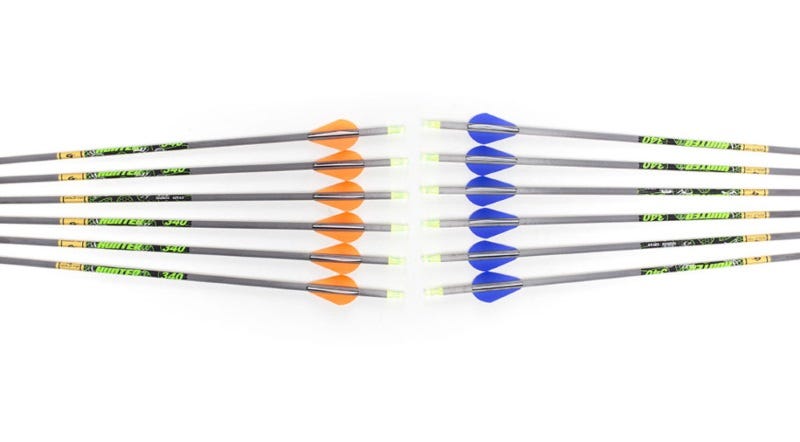
Grains Per Inch (GPI): Weight Before Inserts
The Grains Per Inch, or GPI, determines the weight of the arrow *key item* BEFORE any inserts, nocks, or fletches have been added. While this isn't my top priority when selecting an arrow, it is still a very important component. The weight of an arrow determines many things. First and foremost, it is an important factor to make sure that your arrow conforms to minimum standards put forth by bow manufacturers, and also to be sure that your arrow meets the legal arrow weight for hunting. It also affects the velocity and momentum of the arrow, and helps determine how much point weight you will need to maintain the correct dynamic spine.
International Bowhunting Organization and the IBO Warranty
Most bow manufacturers use the International Bowhunting Organization, or IBO, standard of 5 grains of arrow weight per pound of draw weight as a minimum arrow weight for warranty purposes. They also use that same standard to determine the fps rating - 30" draw length, 70 pound draw weight, 350 grain arrow. While most 'hunting' arrows will have a mass weight that is well over this standard, there are a few ultra-light arrows that can come in under IBO. There are also state legal minimums that you should consider.
Here in Montana, the legal minimum weight for an arrow is 300 grains with the broad head attached. Idaho uses the same regulation as Montana. Washington's regulation (at the time of this writing) states that the arrow must weigh 6 grains per pound of draw weight and be a minimum of 300 grains. If I were to use my current setup in Washington, I'd be asking for a ticket as my arrows are well under 432 grains that I would be required to have.
It's easy to determine the mass weight of your arrow, even if you don't have a grain scale. Take the GPI of your arrow multiplied by your draw length then add 145 (this assumes you are using 100 grain heads, use 160 if you prefer 125 grain heads). Most fletches on the market weigh about 6 grains, inserts and nocks weight about 12 grains each, there is a few grains worth of glue, and a 100 grain point. My Hexx arrows have a mass weight of 380 grains on the grain scale - They are cut at 29.75 inches, have an arrow wrap, 3 Blazer vanes, H nocks and standard insert, and I use 100 grain points.
Shop all bowhunting and archery supplies here.
If I use my formula I get 7.9 x 31 = 244 + 145 = 389. My Gold Tip Target arrows weigh in at 460 grains cut at 30 inches, with X-vanes, pin bushings and nocks, and 100 grain points. 9.9 x 31 = 307 + 145 = 452. Pretty close, right? There will be some slight variation based on the actual cut length of the arrow, and the use of products like arrow wraps (many Easton arrows are coming from the factory with a shrink-fit wrap already on them) and pin bushings, but for the most part it will give you a close measurement of arrow weight.
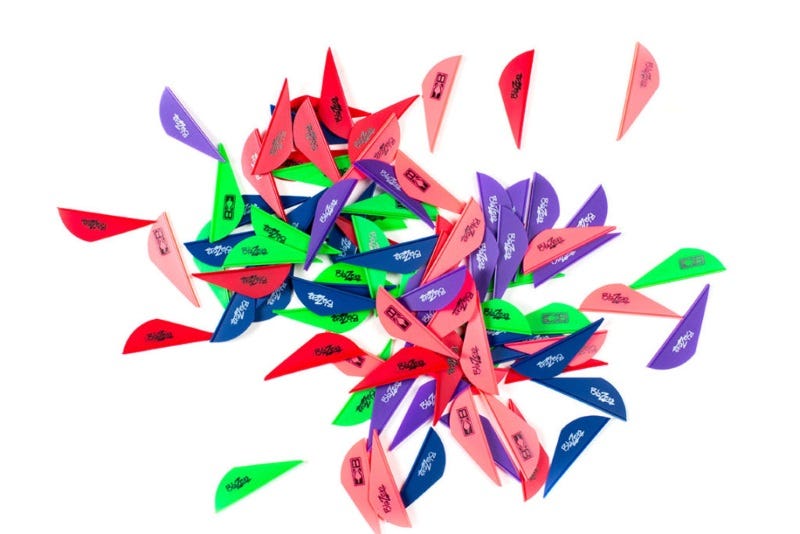
Front of Center and an Arrow's Balance Point
There is another factor that is related to the mass weight of an arrow - Front of Center. FOC is something that has been talked a lot about over the past few years, and it is now becoming a marketing tool for manufacturers. Built-in Weight Forward is a phrase that comes to mind. FOC is the percentage measurement of the balance point of the arrow forward of the exact middle. Here is how you figure it out. Measure the arrow from the very front of the point to the very back of the nock. Divide that distance in half and make a mark on your arrow - I use a silver Sharpie. Now balance the arrow on your finger and make another mark at the balance point. Measure the distance between the two marks. Now divide the distance between center and balance point by the half-length. Your equation should look something like this: (distance from balance point to center point) / (half total length of arrow).
If your arrow is 30.5 inches from tip to nock, your center point should be marked at 15.25 inches. If your balance point is 2.5 inches forward of your center, your equation will look like this: 2.5 / 15.25 = 0.16393. If you multiply that number by 100 you'll have your percentage Front of Center, in this case 16.4%. I have heard that anywhere from 11 - 18% is proper FOC, but there does not seem to be a consensus about what percentage gives an arrow the best flight. Every expert in the industry seems to have a different opinion about FOC, and even how to measure FOC. While this should definitely not sway your decision to purchase or pass on an arrow, it is something that you should at least give some thought to. Just remember that if you want to shoot a heavier GPI arrow, you'll need more weight on the front end to maintain your FOC.
When it comes to balance, these stabilizers help get you dialed in.
With all of that in mind, how should you select your next arrow? Let's go back to that initial question of "what are you going to be using it for?" If your answer is hunting, I have a few more questions for you. What is your draw length and draw weight? What weight of broad heads are you planning to shoot? And what bow are you shooting? If you are shooting a 29" draw length and 70 pound bow, I can eliminate all of the 500 spine arrows as they are going to be too weak and probably weigh less than the 350 grain minimum. If you want to shoot 125 grain heads, I would probably steer you towards a 340 spine that will be stiff enough to handle the heavier weight up front.
If you plan to shoot 100 grain heads, than I need the follow up question of what bow are you shooting. The reason here is that some bows shoot and tune better with a weaker spined arrow. Xpedition and PSE hybrid cam bows, for example, tend to shoot 400 spine arrows much better than 340s because the cam design allows the arrow to flex a little more during the shot cycle, whereas Hoyt and Mathews tend to prefer the stiffer 340 because they aren't as radical of a cam.
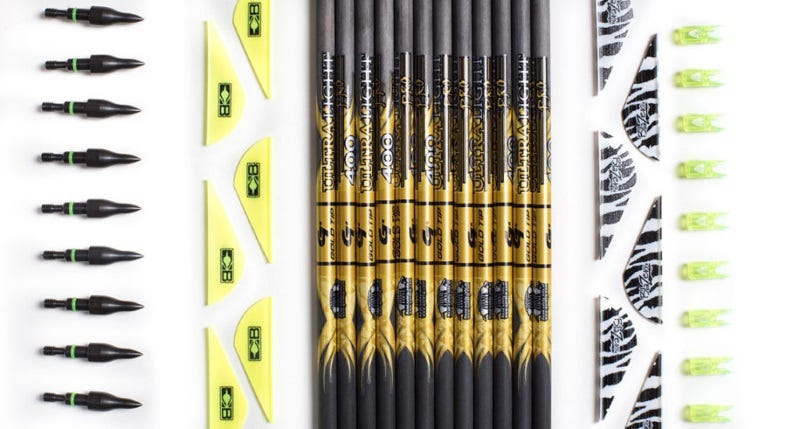
Practical Use of the Arrow you'll be Shooting
Now that we have narrowed your search down to a spine selection, I want to know what type of game you are planning to hunt. If you're a dedicated spot-and-stalk antelope hunter looking for flatter trajectory at longer range, I would recommend a lighter weight arrow with a higher FOC. The HEXX arrow from Easton or Blue Streaks from Carbon Express would be great for this application as their 340 spine arrows weigh in at under 375 grains for a 29" arrow. If you're an elk hunter who's looking for a hard hitting arrow, I would steer you towards the Pile Driver Pass-Thru Extreme from Carbon Express.
This arrow has a very thick wall and is on the heavier side - a whopping 10.3 GPI in a 350 and 9.36 in their 250. The Pile Driver also delivers great FOC by utilizing a 40 grain half-outsert which allows you to use 100 grain broad heads instead of changing over to 125s. If you are a multi-species hunter that wants an all-around good arrow that has some speed but still delivers momentum, I would recommend either an Easton Axis, Gold Tip Hunter, or Easton Bloodline. All three of these options give you a mid-weight arrow that maintains momentum to ensure good penetration at any hunting range.
Looking for the best archery gear, check these out.
Summary: Takeaways for Choosing the Right Arrow
Making sure that your arrows match your bow, and your intended use, is an important step towards better shooting. I hope that this article has left you with more answers than question. If you do have questions, however, please feel free to call your local North 40 archery shop for advice. Better yet... stop in and visit with us!
